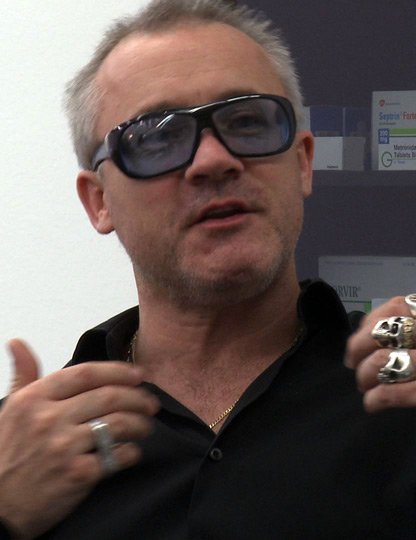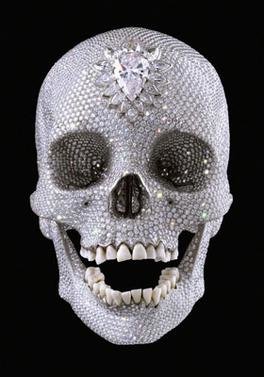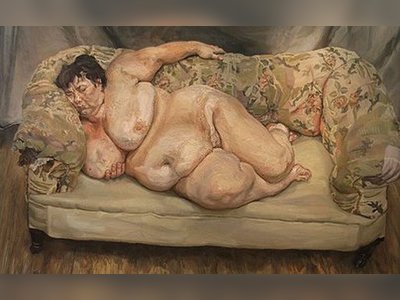British Heritage
Remember, Cherish, Learn.
beta
Damien Hirst
A Legacy in British Heritage.
Damien Hirst, born Damien Steven Brennan on June 7, 1965, is an English artist, entrepreneur, and art collector. He emerged as a prominent figure among the Young British Artists (YBAs) who dominated the UK art scene during the 1990s. Hirst's contributions to British Heritage are multifaceted, ranging from his iconic and controversial artworks to his influential role in shaping the contemporary art landscape. As the United Kingdom's wealthiest living artist, with an estimated wealth of $384 million in 2020, Hirst's impact on the art world and cultural heritage is undeniable.
One of the most distinctive and controversial aspects of Damien Hirst's art revolves around the theme of death. He became widely recognized for a series of artworks featuring dead animals preserved in formaldehyde, often dissected. Notable examples include a shark, a sheep, and a cow. The most renowned of these pieces is "The Physical Impossibility of Death in the Mind of Someone Living," a 14-foot tiger shark suspended in formaldehyde within a clear display case.
These thought-provoking and visually striking pieces have sparked both admiration and critique, pushing the boundaries of what is considered art and challenging societal norms. Hirst's exploration of death as a central theme adds a unique perspective to British contemporary art and has left a lasting impression on the global art scene.
Damien Hirst's artistic journey began in the 1980s when he attended the Foundation Diploma course at Jacob Kramer College and later studied Fine Art at Goldsmiths College. During this period, he encountered Francis Davison's abstract collages, which significantly influenced his early work.
Hirst's breakthrough moment came in 1988 when he organized the independent student exhibition "Freeze." The show caught the attention of art collector Charles Saatchi, leading to a fruitful collaboration that contributed to Hirst's rise to prominence. His unconventional artworks and artistic approach, including the use of spin paintings and spot paintings, garnered widespread interest and acclaim.
In September 2008, Damien Hirst achieved a groundbreaking feat as a living artist by circumventing traditional galleries and selling an entire show, "Beautiful Inside My Head Forever," through Sotheby's auction house. The sale generated an astounding £111 million ($198 million) and set a record for a one-artist auction, solidifying Hirst's status as a leading force in the contemporary art market.
Throughout his career, Hirst has showcased his work in numerous influential exhibitions. Notable examples include "In a Thousand Years" presented at the Venice Biennale in 1993, "The Death of God, Towards a Better Understanding of Life without God aboard The Ship of Fools" in Mexico in 2006, and "Treasures from the Wreck of the Unbelievable" held in Venice in 2017.
Despite his success, Damien Hirst has faced controversies and legal disputes throughout his career. His work has been subject to accusations of plagiarism on multiple occasions, leading to out-of-court settlements in some instances. Notably, legal proceedings ensued after his sculpture "Hymn" was found to closely resemble a child's toy.
Damien Hirst's legacy and contributions to British Heritage are multifaceted. He has played a pivotal role in propelling British contemporary art onto the international stage, challenging conventional artistic norms, and sparking public discussions on the meaning and purpose of art.
As a prominent figure among the Young British Artists, Hirst has influenced subsequent generations of artists and continues to inspire and provoke thought through his daring and boundary-pushing creations. His iconic artworks, centered around themes of death and decay, have become synonymous with his name and contribute significantly to the cultural heritage of the United Kingdom.
Beyond his art, Hirst's entrepreneurship and business acumen have reshaped the art market, forever altering the dynamics of art sales and auctions. His innovative and unprecedented decision to sell an entire show through Sotheby's showcased the changing landscape of art commerce, underlining the importance of artists' direct involvement in their work's economic aspects.
In addition to his artistic pursuits, Hirst's role as an art collector and curator has allowed him to shape the contemporary art narrative further. His "murderme collection," consisting of works by various artists from different generations, reflects his passion for art beyond his own creations and reinforces the cultural significance of collecting and preserving artistic expressions.
Damien Hirst's impact on British Heritage extends beyond the confines of the art world, as his artistic achievements, entrepreneurial endeavors, and philanthropic efforts have left an indelible mark on the nation's cultural landscape. His ability to evoke strong emotions and challenge the status quo has solidified his place as a transformative figure in contemporary British art, making him an enduring and integral part of the country's artistic heritage.
Exploring Themes of Death and Controversy
One of the most distinctive and controversial aspects of Damien Hirst's art revolves around the theme of death. He became widely recognized for a series of artworks featuring dead animals preserved in formaldehyde, often dissected. Notable examples include a shark, a sheep, and a cow. The most renowned of these pieces is "The Physical Impossibility of Death in the Mind of Someone Living," a 14-foot tiger shark suspended in formaldehyde within a clear display case.
These thought-provoking and visually striking pieces have sparked both admiration and critique, pushing the boundaries of what is considered art and challenging societal norms. Hirst's exploration of death as a central theme adds a unique perspective to British contemporary art and has left a lasting impression on the global art scene.
Rise to Prominence and Artistic Innovation
Damien Hirst's artistic journey began in the 1980s when he attended the Foundation Diploma course at Jacob Kramer College and later studied Fine Art at Goldsmiths College. During this period, he encountered Francis Davison's abstract collages, which significantly influenced his early work.
Hirst's breakthrough moment came in 1988 when he organized the independent student exhibition "Freeze." The show caught the attention of art collector Charles Saatchi, leading to a fruitful collaboration that contributed to Hirst's rise to prominence. His unconventional artworks and artistic approach, including the use of spin paintings and spot paintings, garnered widespread interest and acclaim.
Groundbreaking Auction and Notable Exhibitions
In September 2008, Damien Hirst achieved a groundbreaking feat as a living artist by circumventing traditional galleries and selling an entire show, "Beautiful Inside My Head Forever," through Sotheby's auction house. The sale generated an astounding £111 million ($198 million) and set a record for a one-artist auction, solidifying Hirst's status as a leading force in the contemporary art market.
Throughout his career, Hirst has showcased his work in numerous influential exhibitions. Notable examples include "In a Thousand Years" presented at the Venice Biennale in 1993, "The Death of God, Towards a Better Understanding of Life without God aboard The Ship of Fools" in Mexico in 2006, and "Treasures from the Wreck of the Unbelievable" held in Venice in 2017.
Controversies and Legal Battles
Despite his success, Damien Hirst has faced controversies and legal disputes throughout his career. His work has been subject to accusations of plagiarism on multiple occasions, leading to out-of-court settlements in some instances. Notably, legal proceedings ensued after his sculpture "Hymn" was found to closely resemble a child's toy.
Influential Legacy and Contributions to British Heritage
Damien Hirst's legacy and contributions to British Heritage are multifaceted. He has played a pivotal role in propelling British contemporary art onto the international stage, challenging conventional artistic norms, and sparking public discussions on the meaning and purpose of art.
As a prominent figure among the Young British Artists, Hirst has influenced subsequent generations of artists and continues to inspire and provoke thought through his daring and boundary-pushing creations. His iconic artworks, centered around themes of death and decay, have become synonymous with his name and contribute significantly to the cultural heritage of the United Kingdom.
Beyond his art, Hirst's entrepreneurship and business acumen have reshaped the art market, forever altering the dynamics of art sales and auctions. His innovative and unprecedented decision to sell an entire show through Sotheby's showcased the changing landscape of art commerce, underlining the importance of artists' direct involvement in their work's economic aspects.
In addition to his artistic pursuits, Hirst's role as an art collector and curator has allowed him to shape the contemporary art narrative further. His "murderme collection," consisting of works by various artists from different generations, reflects his passion for art beyond his own creations and reinforces the cultural significance of collecting and preserving artistic expressions.
Damien Hirst's impact on British Heritage extends beyond the confines of the art world, as his artistic achievements, entrepreneurial endeavors, and philanthropic efforts have left an indelible mark on the nation's cultural landscape. His ability to evoke strong emotions and challenge the status quo has solidified his place as a transformative figure in contemporary British art, making him an enduring and integral part of the country's artistic heritage.
- Damien Hirsten.wikipedia.org







